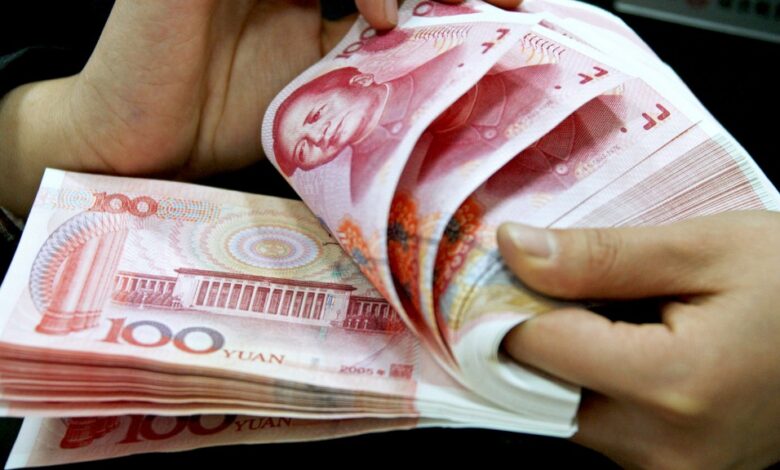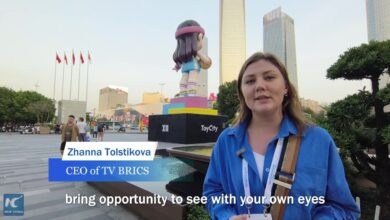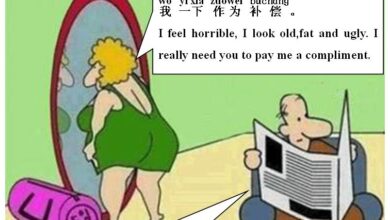
China Doesnt Want People Flaunting Their Wealth
China doesnt want people flaunting their wealth – China doesn’t want people flaunting their wealth – a statement that might seem surprising to some, given the country’s rapid economic growth and the rise of a wealthy elite. But beneath the surface of gleaming skyscrapers and luxury brands lies a complex interplay of historical attitudes, government policy, and deeply ingrained cultural values that shape how wealth is perceived and displayed.
This isn’t just about economic inequality; it’s about social harmony, national identity, and the enduring influence of traditional philosophies.
From the dynasties of old, where ostentatious displays were often viewed with suspicion, to the present day where government crackdowns on corruption and initiatives promoting social equality are commonplace, the narrative around wealth in China is far more nuanced than a simple celebration of riches. We’ll delve into the historical context, explore the social implications of conspicuous consumption, examine government policies, and analyze the cultural perspectives that underpin this unique relationship between wealth and society.
Historical Context of Wealth Display in China
China’s attitude towards the public display of wealth has fluctuated dramatically throughout its long history, shaped by philosophical currents, political realities, and economic conditions. While periods of relative openness existed, a prevailing cultural emphasis on modesty and social harmony often tempered ostentatious displays of riches. This complex interplay of factors continues to influence contemporary perceptions.The historical record reveals a nuanced relationship between wealth and its public manifestation.
While immense fortunes were accumulated by emperors, officials, and merchants throughout various dynasties, the manner in which this wealth was displayed often reflected prevailing social norms and the political climate. Periods of stability and prosperity sometimes saw a more relaxed approach to outward displays of wealth, whereas times of instability or social upheaval often led to stricter regulations and a greater emphasis on social harmony over individual opulence.
Wealth Display During Imperial Dynasties
The attitudes towards wealth display varied considerably across different Chinese dynasties. During the Tang Dynasty (618-907 AD), a period of relative economic prosperity and openness, a certain degree of conspicuous consumption was tolerated, particularly among the elite. However, even then, Confucian ideals of moderation and social responsibility tempered excessive displays. The Song Dynasty (960-1279 AD), known for its flourishing urban centers and commercial activity, witnessed a more visible merchant class, but ostentatious displays of wealth remained somewhat restrained, with social pressure often favoring understated elegance over blatant extravagance.
In contrast, the Ming (1368-1644 AD) and Qing (1644-1912 AD) dynasties, despite periods of great wealth accumulation, saw stricter sumptuary laws aimed at controlling the extravagant spending of officials and the upper classes, reflecting a concern about social stability and the potential for corruption. These laws often dictated what types of clothing, jewelry, and even housing could be used by different social strata.
The Impact of Confucianism and Daoism, China doesnt want people flaunting their wealth
Confucianism, a dominant philosophical influence throughout much of Chinese history, emphasized social harmony, moderation, and the importance of fulfilling one’s social role. While not explicitly condemning wealth, Confucianism discouraged ostentatious displays that might undermine social stability or create resentment among the less fortunate. Similarly, Daoism, with its emphasis on simplicity and naturalness, also generally favored a less materialistic approach to life, although wealthy Daoist patrons did exist and sometimes supported the construction of grand temples.
China’s crackdown on ostentatious displays of wealth is interesting, considering the massive infrastructure projects underway. This focus on understated prosperity might seem at odds with the booming renewable energy sector, but even here, a subtle approach is taken; for example, the quiet but significant advancements in sustainable power sources like floating solar has a bright future , which offers a clean energy solution without the flashy pronouncements.
Ultimately, it’s about progress, not public showmanship, in China’s vision for the future.
These philosophical influences contributed to a cultural preference for understated elegance and a disapproval of excessive extravagance.
The 20th Century and the Rise of Socialism
The 20th century witnessed a radical shift in the relationship between wealth and its public display in China. The establishment of the People’s Republic of China in 1949 brought with it a socialist ideology that explicitly condemned conspicuous consumption as a bourgeois vice. The Cultural Revolution (1966-1976) further intensified this rejection of material wealth, with campaigns aimed at eliminating displays of affluence and promoting egalitarianism.
This period had a profound and lasting impact on shaping current perceptions, fostering a deep-seated cultural aversion to blatant displays of wealth in many segments of the population. The subsequent economic reforms initiated in the late 1970s, while leading to unprecedented economic growth and the emergence of a wealthy class, did not immediately overturn this ingrained cultural aversion.
The government’s continued emphasis on social harmony and the avoidance of excessive inequality continues to influence attitudes toward wealth display.
Social Implications of Flaunting Wealth
In contemporary China, the public display of wealth carries significant social implications, extending beyond mere personal preference. While economic growth has lifted millions out of poverty, a stark wealth disparity remains, creating a complex social landscape where conspicuous consumption can be met with anything from indifference to outright hostility. The reactions to displays of wealth are multifaceted and depend heavily on the context, the perceived motivations of the wealthy individual, and the social standing of the observer.The potential social consequences for individuals who openly display their wealth in China are numerous and can range from minor social disapproval to significant reputational damage and even, in extreme cases, personal safety concerns.
China’s official stance discourages ostentatious displays of wealth, a policy seemingly at odds with reality. This hypocrisy becomes clearer when you consider how the wealthy elite manipulate the system, as evidenced by this insightful article on how China’s wealthy elite rigs its university arms race. Their children gain access to top universities, further solidifying their privileged positions and highlighting the disconnect between official rhetoric and actual practice regarding wealth display.
This stems from a deep-seated cultural emphasis on humility and social harmony, which often clashes with the ostentatious displays associated with conspicuous consumption. The tension between individual achievement and collective well-being creates a fertile ground for negative social reactions.
Negative Reactions to Conspicuous Consumption
Several social groups in China react negatively to conspicuous consumption, driven by a range of motivations. These reactions are not monolithic, but rather reflect the diverse social fabric of the country. The intensity of these reactions also varies depending on the specific context and the perceived intentions behind the display of wealth.The motivations behind these negative reactions are varied.
Firstly, there’s a strong sense of social fairness and equity. The significant wealth disparity in China fuels resentment towards those perceived as flaunting their wealth, especially in the face of persistent poverty and inequality. Secondly, the traditional emphasis on humility and modesty clashes directly with the outward displays associated with conspicuous consumption. Such displays are seen as vulgar and disrespectful of traditional values.
Finally, there’s a pragmatic concern about the potential for corruption and illicit wealth accumulation. Open displays of wealth can attract unwanted attention from authorities and trigger investigations into the source of the wealth.
Examples of Social Pressure Against Ostentatious Displays
Social pressure in China actively discourages ostentatious displays of wealth through various means. Informal social norms and expectations often outweigh formal regulations. For example, “低调” (diāo dī), meaning “low profile,” is a highly valued social trait, particularly among the successful. Publicly embracing a low-key lifestyle, even when possessing significant wealth, is often seen as a sign of sophistication and social intelligence.
Furthermore, online shaming and social media criticism can swiftly and effectively target individuals perceived as flaunting their wealth inappropriately. Negative commentary and public ridicule can significantly impact an individual’s reputation and social standing. This online pressure, often amplified through social media platforms like Weibo, serves as a powerful mechanism for enforcing social norms regarding wealth display. Finally, even within private circles, subtle forms of social pressure, such as exclusion from social events or hushed disapproval, can effectively discourage ostentatious behavior.
These informal sanctions are often more potent than formal regulations in shaping individual behavior.
Government Policies and Regulations

The Chinese government plays a significant role in shaping public attitudes towards wealth and its display, aiming for a balance between economic prosperity and social stability. This involves a complex interplay of direct regulations and indirect societal influence, often promoting a narrative of collective progress over individual ostentation. The government’s approach is multifaceted, employing legal frameworks, public campaigns, and subtle shifts in social messaging to guide public behavior.The government’s influence on public perception is achieved through various means.
State-controlled media consistently promotes a narrative emphasizing frugality, hard work, and collective achievement. High-profile corruption cases involving extravagant displays of wealth are frequently publicized, serving as a deterrent and reinforcing the message that such behavior is unacceptable. Conversely, stories celebrating individuals who have achieved success through hard work and contributed to society are highlighted, promoting a different model of success.
Regulations on Public Spending and Corruption
China has implemented numerous laws and regulations targeting corruption and extravagant spending, both directly and indirectly influencing conspicuous consumption. The Anti-Corruption Law, for instance, explicitly prohibits officials from accepting bribes or engaging in activities that violate ethical standards. This, in turn, discourages the ostentatious display of wealth often associated with corruption. Further regulations exist on government procurement and spending, limiting the scope for lavish expenditures and wasteful projects.
These regulations, while primarily aimed at combating corruption, have the indirect effect of curbing excessive displays of wealth, particularly within government circles.
Government Campaigns Promoting Social Harmony
Several government campaigns have been launched to foster a sense of social harmony and discourage excessive displays of wealth. These campaigns often emphasize the importance of social responsibility, community contribution, and modest living. While not explicitly targeting conspicuous consumption, they create a societal environment where such displays are less accepted. For example, campaigns promoting traditional Chinese values such as frugality and modesty are often used to subtly steer public attitudes.
China’s crackdown on ostentatious displays of wealth is a fascinating contrast to what’s happening globally. The recent news about the hindenburg widens its attack on adani , highlighting questionable business practices and potential financial irregularities, shows a different approach to wealth and its perception. It makes you wonder if the pressure to downplay wealth is a way to avoid similar scrutiny, or simply a reflection of differing cultural values regarding public displays of affluence.
These campaigns leverage the power of social messaging and cultural norms to achieve their goals, influencing public behavior in a less direct but potentially more effective way. The emphasis on a collective, rather than individualistic, approach to success is a key element in these campaigns.
Examples of Specific Initiatives
One notable example is the “Eight-Point Regulation” issued in 2012, aimed at curbing extravagance within the government. This regulation specifically targeted lavish banquets, excessive gift-giving, and the use of public funds for personal gain. While not directly addressing consumer behavior outside the government, it set a precedent for stricter control over public spending and contributed to a broader societal shift towards less ostentatious displays of wealth.
The implementation and enforcement of this regulation, along with similar initiatives, demonstrates the government’s commitment to controlling excess and promoting social harmony. While the impact of these campaigns is difficult to quantify precisely, they represent a significant government effort to shape public attitudes and behaviors.
Economic Factors and Inequality
China’s rapid economic growth over the past few decades has undeniably lifted millions out of poverty, but it has also led to a significant widening of the income gap. This burgeoning inequality is intrinsically linked to the social sensitivity surrounding displays of wealth. The stark contrast between the opulent lifestyles of a small elite and the struggles of a large portion of the population fuels resentment and contributes to the government’s crackdown on ostentatious displays of riches.The impact of rapid economic growth and the resulting wealth disparity on public perceptions is multifaceted.
While many celebrate the economic progress and the opportunities it has created, the conspicuous consumption of a wealthy minority serves as a constant reminder of the inequality that persists. This disparity fuels social unrest and undermines the narrative of shared prosperity that the government seeks to promote. The public perception is shaped not only by the actual level of inequality but also by the visibility of that inequality, amplified by social media and readily accessible information.
The government’s efforts to curb extravagant displays of wealth are, therefore, not merely about social decorum but also about managing social stability and maintaining its legitimacy.
Income Distribution in China Compared to Other Countries
Understanding China’s income inequality requires comparing it to other nations. While precise figures vary depending on the methodology and data source, a general comparison reveals its relative position. The Gini coefficient, a common measure of income inequality, provides a useful metric. A higher Gini coefficient indicates greater inequality. While China’s Gini coefficient has fluctuated over the years, it generally remains higher than many developed nations but lower than some other rapidly developing economies.
This comparison underscores the complexity of the issue and highlights that China’s challenge is not unique but shares similarities with many other nations experiencing rapid economic transformation.
| Country | Gini Coefficient (Approximate) | Notes | Data Source (Illustrative – Replace with actual sources) |
|---|---|---|---|
| China | 0.46 (Illustrative) | Fluctuates and varies based on methodology and data source. | World Bank, etc. |
| United States | 0.41 (Illustrative) | One of the highest amongst developed nations. | US Census Bureau, etc. |
| Germany | 0.30 (Illustrative) | Relatively low income inequality. | German Federal Statistical Office, etc. |
| Brazil | 0.53 (Illustrative) | High income inequality. | World Bank, etc. |
Future Trends and Predictions: China Doesnt Want People Flaunting Their Wealth

Predicting the future of wealth display in China is a complex undertaking, requiring consideration of interwoven economic, social, and political factors. While outright flaunting of wealth may continue to be discouraged, the subtle ways in which affluence is expressed are likely to evolve, reflecting both shifting government priorities and the changing aspirations of the Chinese populace.The coming years will likely witness a nuanced shift in how wealth is perceived and displayed.
A complete eradication of conspicuous consumption is improbable; rather, we can anticipate a gradual transition towards more understated, sophisticated, and socially responsible forms of wealth expression. This shift will be driven by a combination of tightening regulations, increased social awareness, and a generational change in values.
Evolving Government Policies and Their Impact
Government policies will continue to play a crucial role in shaping attitudes towards wealth display. While outright bans on luxury goods are unlikely, we can expect stricter enforcement of existing anti-corruption measures and a greater focus on promoting social harmony and equitable distribution of wealth. This might manifest in stricter regulations on luxury purchases, particularly those made with potentially illicit funds, and increased transparency regarding high-level officials’ assets.
We might see a stronger emphasis on philanthropy and socially responsible investment as acceptable – even desirable – ways for the wealthy to demonstrate their success. The government’s emphasis on “common prosperity” will continue to influence how wealth is perceived and displayed, pushing towards a less ostentatious and more community-minded approach.
Shifting Social Values and Aspirations
Younger generations in China, having grown up in a rapidly changing economic landscape, exhibit different attitudes towards wealth compared to their predecessors. While material success remains a significant aspiration, there’s a growing emphasis on personal fulfillment, social impact, and experiential wealth. This translates to a potential decline in the appeal of overtly luxurious goods and a rise in demand for experiences, education, and personal development.
The increasing influence of social media and online platforms could also accelerate this shift, as younger generations prioritize authenticity and genuine connections over superficial displays of wealth. We might see a rise in “quiet luxury,” where wealth is subtly conveyed through understated elegance and quality rather than blatant branding.
A Visual Representation of Future Scenarios
Imagine two contrasting scenarios: Scenario A depicts a bustling city square in 2030. While some individuals still display expensive accessories, the overall atmosphere is less ostentatious. Luxury cars are present but less numerous, replaced by a greater variety of vehicles reflecting a broader range of incomes. Individuals engage in conversations and activities that prioritize community interaction rather than competitive displays of wealth.
Philanthropic initiatives and community projects are prominently displayed, highlighting social responsibility. Scenario B depicts a more static image, where the conspicuous consumption of the past remains prevalent. Luxury brands and expensive cars are still highly visible. However, this scenario is less likely, given the ongoing societal and governmental shifts. The contrast between these scenarios highlights the potential for a more nuanced and socially conscious approach to wealth display in the future.
Ultimately, China’s complex stance on flaunting wealth reveals a fascinating tension between economic progress and social stability. While the country celebrates its economic achievements, it simultaneously seeks to manage the social consequences of growing inequality and maintain a sense of national unity. The ongoing evolution of attitudes towards wealth display will undoubtedly be shaped by future economic developments, shifts in cultural values, and the ever-changing strategies of the Chinese government.
It’s a story still unfolding, and one that continues to fascinate and challenge our understanding of wealth and power in the 21st century.





